Filter Content
- ACPPA announce Premium Partnership with Australian Catholic Superannuation
- Australian Catholic Super
- Talk of Principals In Catholic Schools - TOPICS 2019
- WOODS Furniture
- Get the latest news from our SZapp and WIN!
- Hear and Learn
- Schools policy in 2018: reflecting on the big events from last year and the new developments for 2019
- Pixevety
- IMPACT THE FUTURE Conference March 26th -29th 2019
- ACPPA LINKS -Exclusive Offer!
- Making friends in primary school can be tricky. Here’s how parents and teachers can help
- Switch Recruitment
- National curriculums don’t always work for rural and regional schools
- Teeth on Wheels
- SPOTLIGHT - AUSTRALIAN CAPITAL TERRITORY
- PETAA
- What challenges are principals facing in 2019?
- Teachers Health
- APPA National Conference 2019 - Register NOW by clicking this logo!
- MSP
- It takes more than a great ATAR to make a great teacher.
- Camp Australia
- School Aid - Ten Tenners for Townsville Project
- When should a child have a smartphone?
- Thought of the Day
ACPPA announce Premium Partnership with Australian Catholic Superannuation
Working towards our goal to be the peak body and voice for Catholic Primary Principals in Australia, the Australian Catholic Primary Principals' Association (ACPPA) is pleased to announce its exclusive strategic partnership with Australian Catholic Superannuation and Retirement Fund (Australian Catholic Superannuation), the superannuation fund of choice for the Catholic sector.
With its robust portfolio of superannuation, retirement, financial planning and insurance products, Australian Catholic Superannuation caters to the financial needs of over 93,000 members and 15,000 employers across Australia. Australian Catholic Superannuation is a low fee, award-winning industry superannuation fund open to all Australians eligible for superannuation returning an impressive 9.18% return for its balanced option since the Fund’s inception.
In these uncertain times, it is refreshing to have a financial services provider you can trust. Australian Catholic Superannuation has been servicing the Catholic education sector for over 38 years, looking after the retirement planning needs of schoolteachers in the Catholic system over this period. Chief Executive Officer of Australian Catholic Superannuation, Greg Cantor said ‘this partnership provides us with a unique opportunity to assist the principals and staff of over 1,200 Catholic primary schools with their financial needs. Improving their retirement outcomes will be our primary objective and we have the resources and capability to deliver on this vision. We look forward to a long and successful partnership’.
ACPPA welcomes this premium partner arrangement as it provides our association with the resources necessary to build advocacy and action for Catholic school leadership across Australia. Both our organisations share a similar passion for Catholic education and with the many synergies that exist, I am confident we will deliver outstanding outcomes for our respective organisations.
The official partner launch will take place on Monday March 25th at East Hotel, Canberra at 3.30-4.30pm. Any ACT Catholic Primary Principals are more than welcome to join us for the launch and welcome drinks.
I highly recomemend Australian Catholic Superannuation to you and invite you to visit their website by clicking on their logo below,
Brad Gaynor, President
Talk of Principals In Catholic Schools - TOPICS 2019
TOPICS has been supporting Catholic Primary Principals for many many years.
During 2018 we moved to an E-version of TOPICS which allowed us to communicate relevant, informative and current topical information pieces straight to your inbox, app and wepage.
In 2019, we want to continue to be a useful and informative tool for you to quickly scan and pick the most useful articles for you at a particular moment and also provide more indepth articles to be read over a cuppa!
At any time of the year, you are invited to send requests about items of interest you would like included in upcoming TOPICS editions.
Please email me anytime.
To capture your engagement with TOPICS right now, please complete the quick survey below.
Many Thanks for your valuable time.
Poll is closed
Paul Colyer - ACPPA EO
Phone: 0478973767
Email: paul.colyer@acppa.catholic.edu.au
Get the latest news from our SZapp and WIN!
Keep up to date with the latest news and updates from ACPPA in 2019.
ONLY available through our ACPPA SZapp and ONLY available to our Principals.
DOWNLOAD NOW AND GO INTO THE DRAW TO WIN A $200 GIFT VOUCHER
- Visit the app store for apple or playstore for android and type in SZapp in the search field
- Click the icon that looks like this
- Click install
- Once installed Click open
- Click region Australia/Pacific
- Start typing Australian Catholic Primary Principals Assoc.
- Our logo and name should appear
- Registration required
- Register by Clicking and sign in with your email
- Create a password
* available only to Principals who download the SZapp between February 20th and Midnight March 11th. Winner announced in the March edition of TOPICS.
ACPPA welcome a new sponsor, Hear and Learn.
Click this logo to visit their website and watch the video to learn all about their great product for schools.
This is a longer read at just over 1,500 words. Enjoy!
The year 2018 was a mixed bag for schooling policy in Australia.
We had new ministers, a new organisation and some auspicious anniversaries. As Christmas approaches, it’s worth reflecting on the year that’s been.
Let’s begin in the states and territories
New South Wales
One of the biggest ticket items this year is the overhaul of the NSW school curriculum for the first time in decades. The curriculum is currently under review – and when it’s reformed, the effect will likely be felt far beyond NSW’s borders.
There have been multiple indications the reformed curriculum may have a greater focus on capabilities. These are also known as “soft skills” or “21st century skills”, and include creative and critical thinking. (The new Victorian Curriculum, and to a lesser extent the national Australian Curriculum, have also focused more closely on general capabilities.)
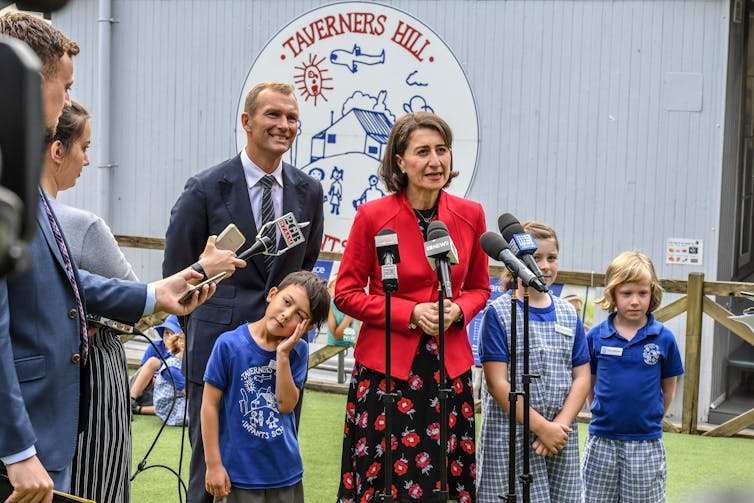
This shift is a response to growing evidence of the vital importance of capabilities to school performance, life outcomes and the economy. There is also evidence they can and should be developed in education settings from toddler-hood through to the tertiary years and beyond. Debate now turns to the best way to do so.
South Australia
NSW is not the only state marching forward with its own bold program. The new South Australian government is embarking on an ambitious school improvement agenda to “speed up” the learning growth of every student in every classroom. This system-wide reform combines tailored approaches with a heavier emphasis on planning, data, literacy and numeracy, building on their successful trial of the phonics check.
Queensland
Queensland is steadily closing gaps in educational outcomes between Indigenous and non-Indigenous students.
It has also launched a new strategic plan. Notably, this includes early childhood education and post-school education, and additional measures for students in regional and rural areas, and students with disabilities. This is part of a cohesive approach to lifting and sustaining learning outcomes for all students.
Victoria
The re-election of the Andrews government in November sees the continuation of its Education State reform agenda. This includes funding more specialists in schools (teachers, doctors, speech pathologists, psychologists and social workers), building and renovating more schools, and providing more preschool.
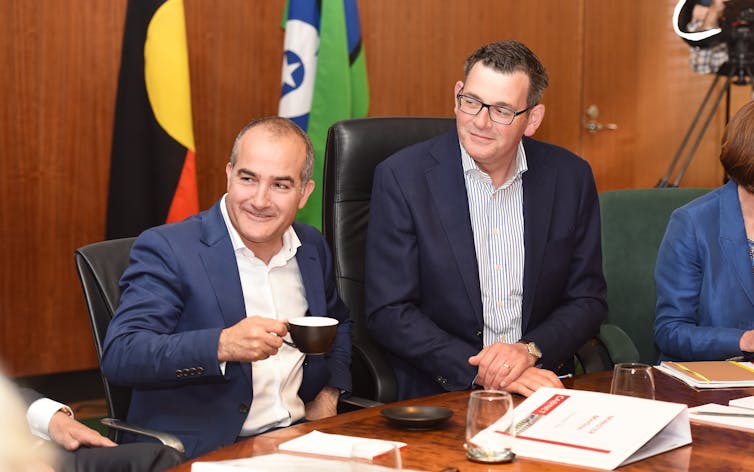
Yes, in a landmark policy announcement, Victoria’s youngest residents will receive two years of funded preschool. Given the benefits of quality preschool to all students, especially reducing developmental vulnerability on school entry, it’s a solid investment. It is one of the only strategies proven by research to lift outcomes for all children.
Western Australia
Western Australia is turning its attention to better recruitment, development and support for school leaders, as part of its broader system improvement strategy.
Tasmania
In Tasmania, the ongoing implementation of the 2017 Education Act kept schools and department officials busy – in large part due to giant shift to 13 years of compulsory schooling (prep to year 12) by 2020.
Until recently, many schools finished at year ten and students wanting to continue their education move to a new school, often in a new town. This is a major factor in Tassie’s low year 12 completion rate of only 72% - a full 10% lower than the national average.
The Northern Territory
And the NT launched it’s latest strategic plan with a focus on school leadership, quality, equity, differentiated learning, community engagement and better data.
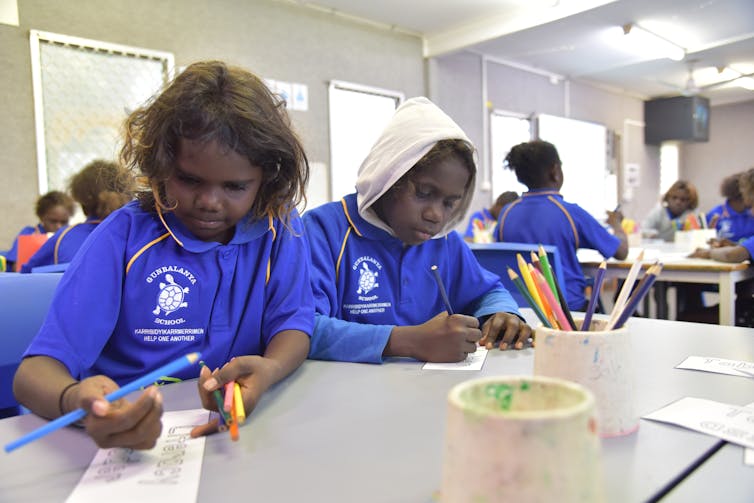
They also put out a new school funding model, with a greater emphasis on action and targeting to student needs and interventions.
ACT
The ACT became the first jurisdiction in Australia to provide every secondary student in a government school with a laptop. The ACT 2018-19 budget also provided A$9.2 million for research and trials of new teaching techniques in response to damning research that found once socio-economic backgrounds are taken into account, ACT students are up to a year behind their counterparts in other states and territories.
Turning to the federal level
Gonski 2.0
The March release of the Gonski 2.0 report was an early highlight. This review was tasked with identifying the school and classroom factors that can make the biggest, sustained difference to educational achievement. This includes what funding should be spent on, rather than structural issues like funding allocations.
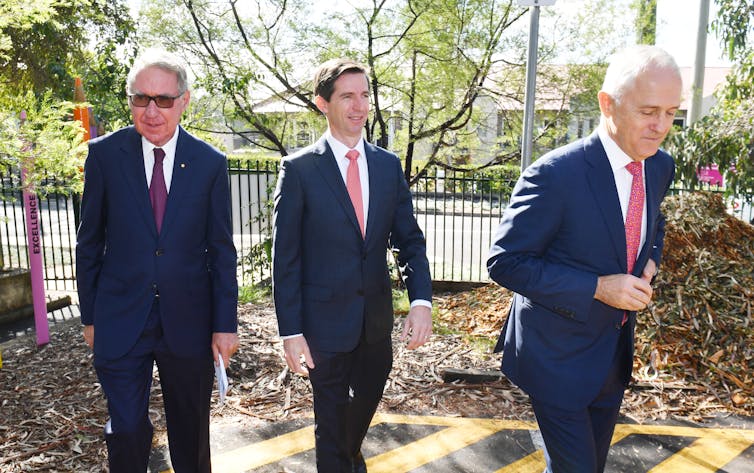
Gonski 2.0 advocated for a student-centred schooling system based on learning growth over time. Key recommendations focused on enhancing student voice, and better valuing of and support for teachers and school leaders, including providing them with the time and tools (including finer grain data, and data beyond NAPLAN) to focus on teaching and educational leadership, so they’re not swamped by administrative compliance.
(Astute readers will have noticed the key elements of Gonski 2.0 are already key elements of existing state and territory policy platforms and strategies.)
Happy anniversary?
2018 was the tenth anniversary of three major pillars of Australian schooling policy: NAPLAN, the Australian Curriculum, Assessment and Reporting Authority (ACARA) and the Melbourne Declaration of Educational Goals for Young Australians. Each celebrated this milestone amidst growing debate on whether they had served their intended purpose.
In the case of NAPLAN, this was accompanied by a growing call for its abolition or overhaul. NAPLAN was intended as a nationally-comparable, point-in-time dataset on a few vital areas to support schools and system leaders to make program and resourcing decisions. It was also meant to inform parental choice of schools.
But misunderstanding and misuse of NAPLAN has led to perverse effects. These include an overemphasis on preparation by some schools and families, resulting in anxiety and curriculum narrowing.
In with the new
2018 also saw the launch of a new national institution - the Gonski Institute focused on addressing education inequality across Australia. Despite - or perhaps because of - near continuous reforms at state and federal levels this past decade, inequality continues to grow.
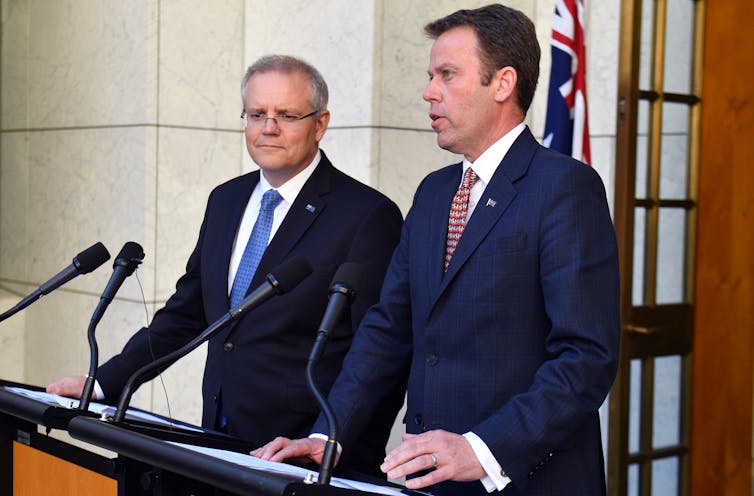
We also got a new federal education minister – Dan Tehan. He received the poisoned chalice of continuing the long and testy negotiations with the states on a five-year school funding agreement derived from the 2017 Education Act (the previous round of funding refoms) and the Gonski 2.0 findings.
These funding agreements are also a key element of the Coalition’s Quality Schools policy package, which has remained fairly constant the last few years.
It wasn’t until this week all jurisdictions were finally signed-up. But the last signatory - Victoria - only made a one-month deal. The Victorian government has expressed their concerns about a “dud deal” that provides more funding for students at non-government schools than those at government schools.
This short-term deal raises a bunch of questions as we head into the near year and the 2019 federal election - will there be by more short-term deals? Will other states seek to renegotiate better terms? Is Victoria banking on a change of government - and negotiating partner?
What do we know about federal Labor’s plans for education?
The key elements of Labor’s schooling policy pillars are restoring funding to schools cut by the Coalition. This includes, contentiously, restoring funding to some of the most over-funded non-government schools.
They have also pledged an additional year of preschool for all kids across Australia, and have announced they will establish a national evidence institute for education policy.
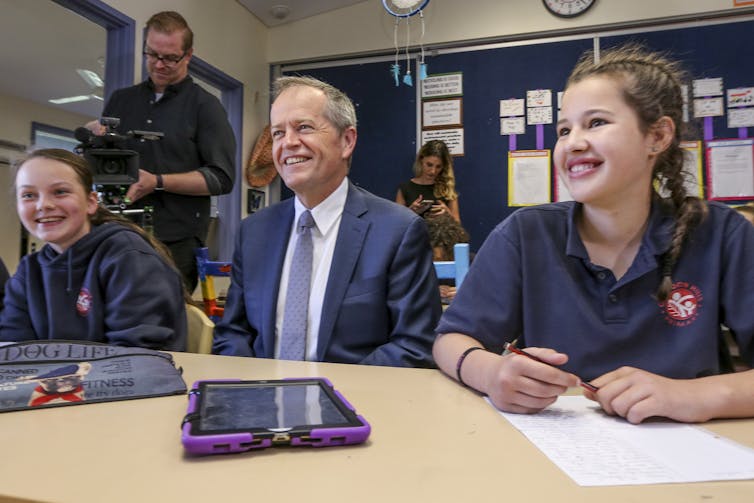
A new year and new goals
The updating of the national goals for Australian schooling by Australia’s state, territory and Commonwealth education ministers next year provides an opportunity to reflect on the purposes of schooling in the 21st century.
It’s hard to find fault with Minister Tehan’s statement that “Australia needs a shared agenda across the country to ensure alignment between policy, practice and delivery” and that young people need “a quality school education, tailored to individual needs”.
But it’s also true the 2008 goals were never achieved because it was never properly implemented.
Grand goals are well and good, but we need to also provision for implementation and work hard to make it happen. This means time, resources, clarity on each stakeholder’s role in creating an excellent and equitable schooling system (which enables all young Australians to become successful learners, confident and creative individuals), and active and informed citizens.
It’s time to commit to action and cooperation, regardless of who wins the 2019 elections.
Read Less
ACPPA Exclusive Offer – To Experience Schoolzine
Schoolzine would like to offer all ACPPA schools their trusted Parent Engagement Platform for a 3-month no obligation trial, giving you complimentary access to Schoolzine DIY eNewsletter service.
Special Bonus Offer: If you are happy with the service after the 3-month trial and decide to continue using the DIY newsletter service, you will receive the mobile app (SZapp) for FREE, for the LIFE of your Schoolzine subscription.
Saving your school $599 every year.
Offer expires 29TH of March 2019, to take up this amazing offer simply click on the ACPPA LINKS page to request a no obligation demonstration, or if you have any questions call Schoolzine on 1300 795 503 or CJ on 0433 991 718.
Remember, by using ACPPA LINKS, you are supporting our initiative to assist Catholic Primary Principals in regional and remote areas of Australia to access professional development and events which otherwise may be out of their reach.
Please click on the link to view the case studies from Our Lady of the River in South Australia and St Simon Peter Catholic Primary School in Western Australia.
Making friends in primary school can be tricky. Here’s how parents and teachers can help
5 min read
If we think back to our own childhood days, most of us would agree making good friends in primary school was not always an easy task. Sometimes friendship occurred out of convenience or survival when there was a limited number of peers to choose from. Sometimes friendship was a utility to be bought and sold through the transaction of lollies or other interesting lunchbox snacks.
Sometimes friendship developed through shared interests and extra-curricular activities. But the friendships found to stand the test of time are those that work to enhance both lives through a mutual sense of humour, empathy, honesty, loyalty, trust and respect.
From this perspective, the best type of friendship is not based on utility, pleasure or convenience which may dissolve over time, but rather the character or virtues of both people. Such friendship needs to be given freely (rather than forced), reciprocal (rather than one-sided), and recognise the virtues both people contribute in getting to know each other and themselves more deeply.
What is developmentally normal?
From a psychological perspective, there are five stages of social competence that influence the formation of friendships:
- stage one (three to seven years) involves momentary friendship with whoever is in close proximity
- stage two (four to nine years) involves one-way friendship with someone who can help us achieve our own goals
- stage three (six to 12 years) involves reciprocal friendship, but only under specific conditions
- stage four (11-15 years) involves mutually close and supportive friendship
- stage five (12 to adulthood) involves friendship which respects the autonomy of each individual even though they may share similar interests and deeper feelings.
From a sociological perspective, friendship is not a series of biologically determined hoops children are expected to jump through in sequential order. Children draw on social strategies to resist or create their own peer culture in ways that may differ from adult expectations. They don’t simply mimic adult socialisation.

Yet, the members of select cliques still define what’s considered normal or acceptable within this peer culture. In fact, being chosen as friends by those of equal or higher peer status can decrease the risk of peer victimisation.
Given such complexity in friendship formation, it’s not surprising many parents are concerned with how their children can make quality friendships in primary school. Particularly as research has found a positive link between high-quality friendships and better academic results. They also experience less stress from peer exclusion.
So, if high-quality friendships are important for student academic results and stress reduction, what can parents and teachers do to facilitate this?
What parents can do
A magic formula doesn’t exist, but there are some general evidence-based strategies that have proven to assist in friendship formation without the risk of “bonsai parenting” (where parents over-nurture their children) or “bubble-wrapping” children. These include:
- sending your child to a more culturally diverse school where no ethnic group represents the majority of the population and there is a lower risk of visibility and peer victimisation
- encouraging your child to participate in school-based extra-curricular activities such as sport, creative arts or youth groups where they have the opportunity to broaden their social networks
- organising play dates with peers who are socially competent and have similar interests to your child
- supporting your child’s own strategies for making friends at school such as observing peers, making or accepting requests to play, initiating or participating in clubs or teams and intervening to include others.
What teachers can do
Given the large amount of time students spend at school, teachers also have a role to play in supporting students to make and maintain positive friendships through:
- explicitly teaching interpersonal skills such as expressing opinions in constructive ways, respecting difference, and caring about the feelings of others
- providing time, space and opportunities for students to work or play with others, identify new friends and maintain their own existing friendships
- being aware of peer culture and attuned to changes, tensions and exclusions in student friendship groups in the classroom or on the playground
- creating a safe space where children can discuss friendship issues such as regular “circle time”.
How to work through ending friendships in primary school
Sometimes we’re lucky enough to maintain friendships as we transition from primary to secondary school (and beyond). Research has shown this may have a positive effect on academic performance and mental health.
But sometimes we grow out of friendships as we evolve in different directions and our values and interests change. There may be times when friendships need to be dissolved if they breach our trust and/or damage our well-being. Children as well as adults, need to know when and how to dissolve such friendships and how to work through any sense of loss that may result.
Read LessNational curriculums don’t always work for rural and regional schools
5 min read
In the past decade, federal government agencies and their state regulators have packaged most things in education in Australia. Big education decisions, like what to teach and what should be tested, are largely made in capital cities. These moves have all been made in the name of improving standards, but they’ve come at the cost of local independence.
We introduced anti-discrimination legislation across Australia between the 1970s and 1990s, but then we centralised curriculum and assessment between 2008 and 2010. One move opened up more opportunities for equity, while the other restricted the ability of teachers to make autonomous decisions in response to their local needs and values.
Belief systems – whether religious, philosophical, political, ideological or a combination – are one of the most understated influences in education. These systems are based on communities’ collective values and beliefs about what matters. Because we have diverse beliefs in Australia, we also have a diversity of schools.
We need to empower and trust local people to take responsibility and collaborate to develop programs for local people. National programs have not yielded improved achievement rates, so why do we persist with the idea of centrally packaging the curriculum?
“Them and us” attitudes make rural students disengage
Although we have about 9,500 schools across Australia, there are two central education powerhouses: The Australian Curriculum, Assessment and Reporting Authority (ACARA) in Sydney, and the Australian Institute for Teaching and School Leadership (AITSL) in Melbourne. Urban bureaucratic perspectives are foregrounded and local and regional perspectives are marginalised. It’s a long way from Melbourne to Broome or Bamaga.
All over the country, schools spend hours reporting their activities to government departments, and bureaucrats spend hours checking and publishing school outcomes. It’s a big compliance game.
ACARA administers and reports on NAPLAN. Curriculum is developed by ACARA and interpreted by state agencies in capital cities. AITSL sets standards for teachers and principals, and state governments use these to set awards and develop career paths for them.
Because school data is published on the internet, efforts by local teachers and principals to provide high quality education are hijacked by comparative assessment and reporting agendas. If there wasn’t a national comparison game, local educators could give more time to creating meaningful learning experiences for their students.
Meanwhile, non-attendance is a major concern in the regions, but we fail to recognise the significance of the “them and us” attitudes that prevail between schools and parents in regional communities.
A review into regional, remote and rural education found there is a genuine concern in regional communities that students are “learning for leaving”. This means the main focus of education is seen to be to get educated school-leavers out of the country into the city.
Many non-urban students choose to disengage because they think school is irrelevant. A mismatch of beliefs about what’s important in education can lead to disengagement and poorer schooling outcomes for regional students.
Reforms
In regional Indigenous communities, socio-cultural divisions are too often reinforced by teachers who are ill-equipped to meet the learning needs of Indigenous students. We have included Indigenous histories and cultures in the Australian Curriculum, but at the same time we’ve compromised Indigenous teaching strategies as local teachers are asked to implement pre-packaged curriculum or foreign instruction techniques.
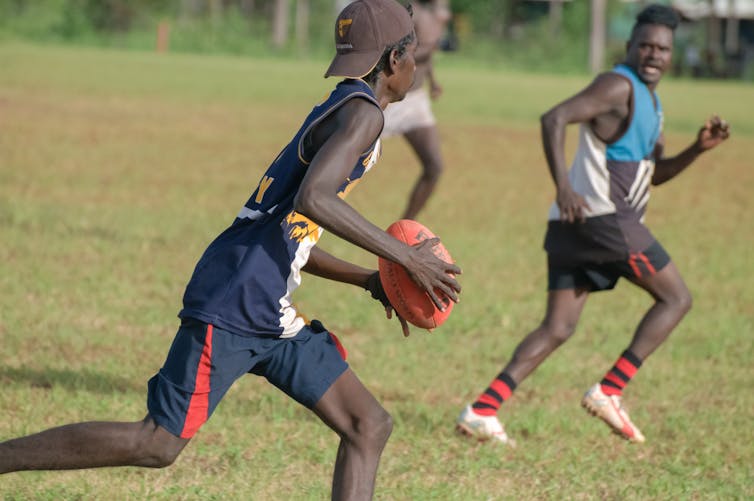
The personal touch
We falter in democracy when we impose programs developed by centralised bureaucracies as band-aids for local problems. Programs alone don’t solve social issues. The catalyst for change is often the teacher, coach, mentor, friend, or colleague. A local person.
We can bureaucratise, standardise and normalise education all we like, but education will always be personal and emotional for local communities because they have their own beliefs, which might not match the beliefs in big cities.
So what do we do about it?
Community consultation is not enough. OECD reports show teachers who are able to contribute to decision-making also report education is valued in their community, and have higher job satisfaction.
Local schools and teachers should be able to develop their own programs that are tailor-made to meet the needs of local communities so learning is meaningful. This way, local beliefs will not be compromised by government agendas, and teachers will feel empowered to meet the needs of their students rather than just getting through the material.
The power of local autonomy has already been proven in Finland, a country that is known for its high educational outcomes.
On a practical level, local schools should be able to choose what they teach and how to test it so learning and assessment is meaningful. We need local autonomy so education can meet the needs of local students.
Read LessSPOTLIGHT - AUSTRALIAN CAPITAL TERRITORY






At Sacred Heart in Pearce we have been working to decrease waste and improve the environment both within the school and in the wider community.
In 2018 we reduced the waste generated at school and managed to lower the cost of its removal by $4,000. We also have an extremely enthusiastic parent who organised and supported the recycling of our empty bottles and drink containers to raise money.
With these initiatives and the acquisition of a community grant we were able to go a further step towards our vision to be actively involved in stewardship of the earth. We used the funds raised to purchase worm farms and composters to go with the community garden we are creating in 2019.
During our first whole school assembly this year, our Student Environmental Leaders and Mr Fox, our Religious Education Coordinator, addressed the students and teachers. They conducted a waste audit of the school and demonstrated the new processes and systems we will be using to further reduce waste and improve recycling at Sacred Heart.
The arrival of our worms on Valentine’s Day was very exciting and challenging for the Environmental Leaders as they set up the worm farms.
The new worm farms and composters are set up next to the site for our new community gardens. This means students will be able to work in the gardens as an activity during lunchtimes. It is hoped that through the students involvement in these environmental programs at Sacred Heart our children become the new stewards of our sustainable community.
Anne Staines - Sacred Heart Primary, Pearce ACT
Email: anne.staines@cg.catholic.edu.au
What challenges are principals facing in 2019?
A snapshot of The Educator’s 2019 Education Report has revealed some of the major challenges facing principals as they begin Term 1.
In the survey, which is contained in The Educator’s upcoming 5.1 issue, school leaders were asked how to rate the following areas in terms of how challenging they expected them to be for their school in 2019.
The rating scale was between 1-5, with 5 being the most challenging.
- Adapting to government and regulatory changes to curriculum and funding (4.13);
- Introducing or improving new school facilities (3.84);
- Keeping up with new technology and teaching methods (3.54).
When asked what their school will do in the next 12 months to achieve their business objectives, 18% said they would invest in staff training and development. In second place was ‘collaborate with other education providers to improve school operations/quality of education’ at 14%. In third place was ‘develop partnerships to create opportunities for students’ at 13%.
In terms of sources school leaders will turn to for guidance or advice on achieving their business objectives, 25% said teachers and staff, 20% said parents and 18% said external consultants. Students trailed in fourth place at 15%.
When asked how they were adapting to government and regulatory changes to curriculum and funding, one principal said: “the post-Gonski funding commitment’s lack of surety will lead to loss of good staff who have been employed on non-guaranteed funding”.
Another said the curriculum “often does not cater to the low ability levels and behaviours of our students”.
One NSW principal predicted some turbulence ahead for the state’s school leaders.
“I expect there will be a lot of this in the latter part of 2019 on the back of the NSW Curriculum review,” the principal said.
It takes more than a great ATAR to make a great teacher.
Educators like me welcome debate on educational issues, including this particular conversation around ATARs. We are keen to hear a range of views. However we are also very aware that public conversations often follow the loudest promoters of potential fixes for the woes of education. Unfortunately, many of these are led by bright ideas from political leaders, which are not supported by evidence.
The idea, fielded this week by Shadow Education Minister, Tanya Plibersek, to mandate a cap on places for teacher education courses to only those with minimum ATARs of 80, may sound like a great idea. Already it seems to have gained many supporters. However leaders in the field of teacher education, myself included, see this as yet another of those simplistic quick ‘fix’ ideas. It works well as a media grab for a politician but will do little to help encourage people into a teaching career.
In reality should any government act on Tanya Plibersek’s suggestion only a small percentage of the people who enter teacher education courses would be affected.
Had teacher educators been consulted we could have pointed out that fewer than one-in-four teacher education students who enter our universities are chosen on the basis of their ATAR alone. The landscape has changed and school leavers are exploring many other post-school options, rather than entering a program that prepares them for a vocation immediately after school completion.
According to the latest available statistics from AITSL at the undergraduate level, only 36% of commencing initial teacher education students entered straight from secondary education in 2016, which was a 1% decrease on the previous year. The statistics are not yet officially available, but it looks like this figure may have dropped to around 30% for 2019.
The point is fewer students are entering teacher education programs straight from school, and increasing numbers are entering after completing other careers, travel or after working overseas.
Evidence about what an ATAR can tell us
In 2014, the Teacher Education Ministerial Advisory Group report noted research findings that indicate ATAR is a good predictor of success for students entering university with strong secondary school performance, but loses predictive capability for those entering university with lower scores. Many students with average or comparatively low senior secondary results also do well once at university. However while this research suggests that rankings are clearly a very good predictor of performance in engineering, agriculture and science, the relationship is low for education.
On the evidence available to date we cannot definitively show that those with higher ATARs become better teachers. This is not to deter universities from encouraging high achieving school leavers into teaching, however a series of reforms are now in place to complement academic scores for would-be teachers. These reforms signal the importance of non-academic traits such as high-level interpersonal skills as well as high-level literacy and numeracy standards, attributes that are vitally important in teaching quality.
Other things we use to select students for teacher education courses
The push to raise ATARs ignores the range of selection methods that universities use to choose teacher education students with the right mix of academic and personal traits. These include looking at prior experience, interviews or psychometric tests (designed to measure a candidate’s suitability for the role).
It also does not take into account the hurdles that teacher education students must clear prior to graduation. Among other assessments, the literacy and numeracy test for initial teacher education students, and the new Teacher Performance Assessment ensure that teaching students meet the robust national teacher professional standards.
How media reporting of ‘low ATARs’ is misleading
The reporting of students with low ATARs being ‘allowed’ into teacher education is misleading and done without context. A student may be accepted into a university course with a lower ATAR than the published cut-off for a variety of reasons. These include:
- The student has gained further experience and qualifications that supersede their ATAR, as their ATAR may have been acquired years before their university entry
- The student has been given special consideration due to personal circumstances (such as the death of a parent) if their low ATAR doesn’t reflect prior academic performance
- The student is a member of a disadvantaged group, and has been granted access to a pathway course during which they have proven they’re capable of undertaking teacher education.
This does not just happen with students entering teacher education courses. Many university courses take students with lower than the published cut-off ATAR (or with no ATARs) for the above, and other, reasons.
The damage uniformed public debate can inflict
Every outburst of public ATAR outrage further deters potential teachers for applying. This is at a time when applications for teacher education enrolments are plummeting as school student numbers are rising.
In 2018, there was a 7.8% national decline in undergraduate applications for teacher education courses and a national 8.9% drop in undergraduate offers for teacher education courses.
In Victoria, which introduced a minimum Australian Tertiary Admission Rank (ATAR) of 65 in 2018, 22% fewer undergraduate offers were made in the first round – a situation that is likely to be further impacted as the Victorian minimum ATAR levels for teacher education rise to 70 this year.
This scenario is occurring when it is estimated that another 1612 primary and secondary schools will be required in Australia by 2028 ( based on average school size by sector for 2017 derived from ABS data). In NSW alone the prediction is there will be a 21% increase in student numbers by 2031, which means an extra 269,000 students needing teachers.
This is the conversation we should be having
We should be encouraging more potential teachers if we are to avoid a disastrous situation in the future. This means stemming the drop in teacher student applications and curtailing teacher shortages beyond traditionally hard-to-fill places areas.
We all want to attract and retain the best to teach this nation’s future. Instead of confrontational comments to media, let’s sit down and work out ways we can do this together.

Tania Aspland is a Professor in Teacher Education at the Australian Catholic University in Sydney and Dean, Education Policy and Strategy. She provides high-level advice on teacher education, governance and policy. Tania is President of the Australian Council of Deans of Education and sits on a number of boards for the Australian government. She also works closely with directors and leaders of school education in government, Catholic and the independent sectors. Tania’s research focuses on educational policy, leadership and reform, higher education curriculum and teacher education.
This article was originally published on EduResearch Matters. Read the original article.
School Aid - Ten Tenners for Townsville Project
Can your school help?
If every school in Australia donated just $100 we would have a $1 million fund to help out. So, Ten-Tenners for Townsville is the aim (more welcome of course!).After the 2011 Floods in Brisbane we raised $965 000 thanks to generous schools an community members across the nation.
Please click the link to donate to this great cause.
If many do a little we can do a lot!
Please join us for this Townsville Flooding Heartbreak Appeal.
When should a child have a smartphone?
New data from Australia’s Office of the eSafety Commissioner shows children as young as 2-years-old are already accessing the internet.
The latest research from the eSafety Office reveals 81% of Australian parents with children aged 2 to 5 report their children are using internet-enabled devices.
Threats posed by online predators, scammers and malware have prompted some to question the merits of letting children use these devices unsupervised at a young age.
According to some experts, the decision to give a child a smartphone has less to do with age and more to do with laying the groundwork for responsible use.
Kerry Gallagher is a digital learning specialist at St. John’s Prep in Danvers, Massachusetts, and director of K-12 education at ConnectSafely.org.
“You know your child is ready for a device when you’ve talked about responsible use and modelled the behaviour on your own device,” Harvard University’s Usable Knowledge quoted Gallagher as saying.
“If you haven’t done any of this work, then it might make sense to wait another year.”
Consider how the child’s school uses technology
One important idea for parents to consider is to understand how their child’s school uses devices and technology.
Gallagher recommends that today’s digital parents communicate often with teachers about how the school uses devices, how much exposure children have, how they are learning to use technology, and how devices should be used at home for school.
She says that if a child’s school has not initiated a conversation about technology use, then parents must be proactive in asking.
“Add it to the ‘to ask’ list at parent-teacher conferences or consider e-mailing a teacher at the start of the quarter,” Gallagher said.
Talk about technology with your child
Gallagher also recommends that parents begin an ongoing conversation about how teachers use technology, how friends use it at school, and even how they themselves use it.
“Ask questions about what your child enjoys about technology. Is there a game or video that he likes? Find out why. In some cases, it might be a signal that your child is interested in actually doing a similar activity,” Gallagher said.
“Also think with your child about the effects technology has on us.”
Gallagher says parents should think with their child about how they feel after they’ve played a lot of video games, versus how they feel after reading for a while.
“The goal is to help children build awareness and learn, ultimately, to regulate their relationship with devices,” she said.



 Cameron Wood, Brad Gaynor, Greg Cantor, Paul Colyer, Paul McGeachie
Cameron Wood, Brad Gaynor, Greg Cantor, Paul Colyer, Paul McGeachie













